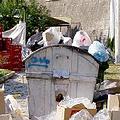 CNN電視台、各大報章雜誌上強力放送與登載的旅遊廣告似乎已擄獲環球旅行群眾的興趣。「野性蒙特內哥羅」的噱頭標語,呈現出親身體驗山林景緻、圖畫般的舊鎮、迷人長灘與塔拉河急速泛舟等樂趣。然而如此天花亂墜描繪的浮誇旅遊廣告背後隱藏著不同的事實。
CNN電視台、各大報章雜誌上強力放送與登載的旅遊廣告似乎已擄獲環球旅行群眾的興趣。「野性蒙特內哥羅」的噱頭標語,呈現出親身體驗山林景緻、圖畫般的舊鎮、迷人長灘與塔拉河急速泛舟等樂趣。然而如此天花亂墜描繪的浮誇旅遊廣告背後隱藏著不同的事實。
有個政府最厭惡去提及的事實,例如:老舊的度假區、腐朽的公共建設、破壞地貌的違章建築、污水問題和水源短缺等等,都可能使聽起來完美無瑕的假期變成地獄般的惡夢。
距今已久遠的1980年代黃金時期,當時蒙特內哥羅是這區域中最受歡迎的旅遊景點之一,每年可以靠觀光收益賺取大約7,900萬歐元。但由於鄰國杜布洛尼克(Dubrovnik)的入侵,蒙特內哥羅陷入戰事,觀光客都被嚇跑了,因此到1990年代初期,旅遊業的收入短少了近600萬美元。
2002年蒙特內哥羅政府當局決定喚回旅遊業的春天,在與歐盟合作之下,揭開一個持續至2020年的蒙特內哥羅旅遊業發展計劃的序幕。
巨大的建築物明顯地改變了沿海的地平線景觀。位於布德瓦(Budva)地區附近的Becici、擁有800張床位的壯麗旅館,就是一個鮮明的例證,目前是蒙特內哥羅最大的度假旅館。
在蒙特內哥羅,這些鮮明且急切的發展卻沒有得到人們讚賞的眼光,政治評論家說許多的建設發展均由卡特爾(Cartel)企業所把持,且掌握在政治權力核心執政者的手中。
非政府組織「改變小組」(The Group for Changes),試圖重整成為一個政黨,特別針對驅策旅遊業的發展發表了評論。
改變小組中的Petar Vuceljic強調,秘密交易及策劃過程不公開,將使得政治權力份子掌控國家的貴重資產。在蒙特內哥羅境內,藉由走私非法賺取金錢的『暴發戶』資本家,正設法取得國家最重要的旅遊業經營權。
另一問題更是無須爭辯的,且深深影響著旅遊發展,就是關於都市計劃土地劃分這個普遍存在的弊病。在科托爾鎮上,二個合法建造的旅館就大剌剌地座落在中世紀城牆的旁邊,這是當地旅遊業的珍珠之一,可能導致科托爾-萊珊海灣自聯合國教科文組織(UNESCO's)的世界文化和自然遺產名單中除名。
儘管如此,這一長串影響蒙特尼哥羅旅遊業發展的問題,似乎並沒有遏止國外訪客數量的持續成長。
 The advertisements, shown on CNN television and in newspapers and magazines, have become an increasingly familiar sight to the globe trotting public. "Wild Montenegro" is the catch phrase - featuring such delights as mountains, picturesque old towns, sandy beaches and rafting on the Tara River. But behind the hype of the glossy tourist ads lies a different reality.
The advertisements, shown on CNN television and in newspapers and magazines, have become an increasingly familiar sight to the globe trotting public. "Wild Montenegro" is the catch phrase - featuring such delights as mountains, picturesque old towns, sandy beaches and rafting on the Tara River. But behind the hype of the glossy tourist ads lies a different reality.
one that the government is loathe to talk about - of shabby resorts, decaying infrastructure, illegal constructions that are ruining the landscape, sewage problems and water shortages that can make the most perfect-sounding holiday a hellish experience.
It has been a long haul back from the sunny days of the 1980s, when Montenegro was one of the region's most popular tourist destinations, earning an annual revenue from tourism of around 79 million euro. But then warfare, and the siege of nearby Dubrovnik, in which Montenegrin soldiers took part, intruded. The tourists went away and by the early 1990s, tourism revenues had slumped to only US$6 million.
Determined to put tourism back on its feet, in 2002 the Montenegrin government, in association with the European Union, unveiled a master plan for the development of Montenegrin tourism until 2020.
Massive construction is dramatically altering the coastal skyline. One illustration of this is the Hotel Splendid in Becici, near Budva, which with 800 beds is now the biggest hotel on the Montenegrin Riviera.
But not all this bright and brash development meets an approving eye in Montenegro, where critics of the government say too much development is in the hands of cartels and a handful of oligarchs.
The Group for Changes, a nongovernmental organization, which is re-launching itself as a political party, is especially critical of the handling of the tourism drive.
Petar Vuceljic, from the group, claims secret deals, hatched far from the public gaze, are enabling an oligarchy to take control of the country's most valuable assets. "Montenegro's 'nouveau riche' capitalist class is trying to take ownership of the country's most important tourism capacities, using money made from smuggling," said Vuceljic.
Another more indisputable problem affecting the tourist industry is widespread abuse of town planning and zoning laws. The announced construction of two hotels next to the medieval walls of the town of Kotor, one of the tourist industry's pearls, may result in the Kotor-Risan bay being crossed off UNESCO's list of world cultural and natural highlights.
However, the long list of problems affecting Montenegrin's tourist industry is not likely to stem the growth in the number of foreign visitors.




